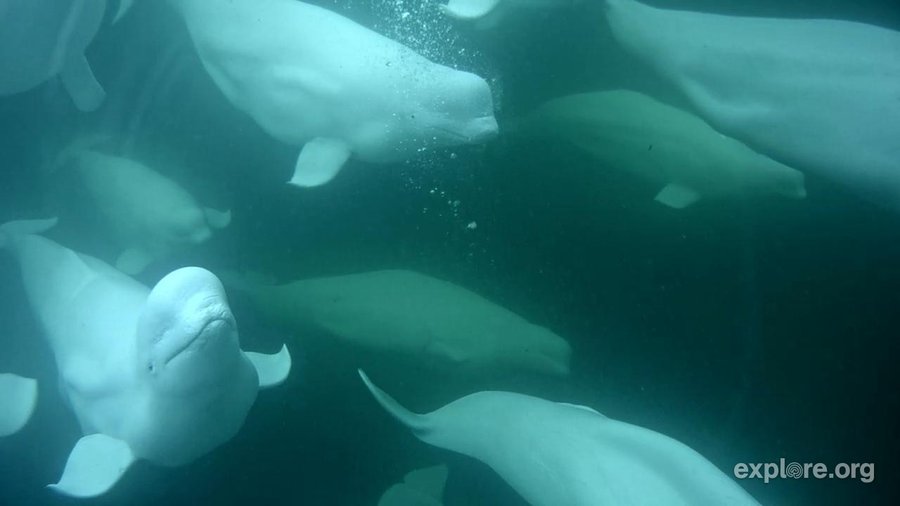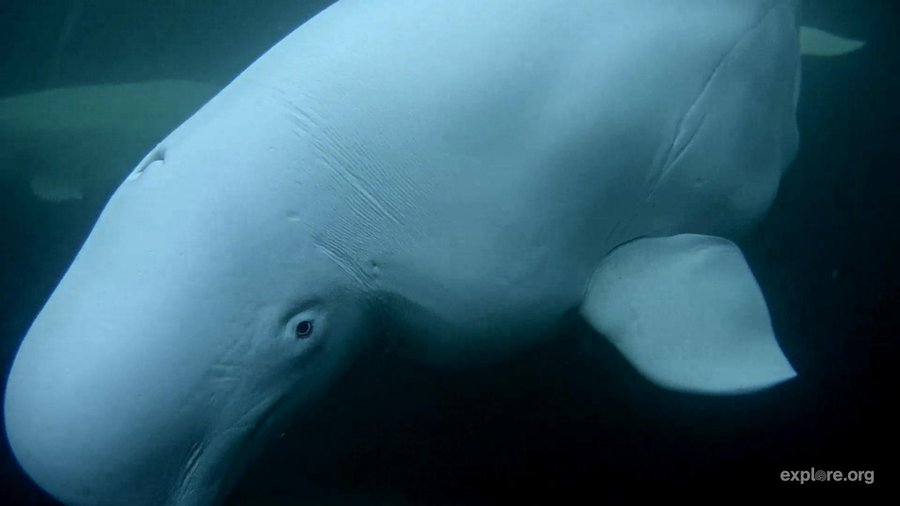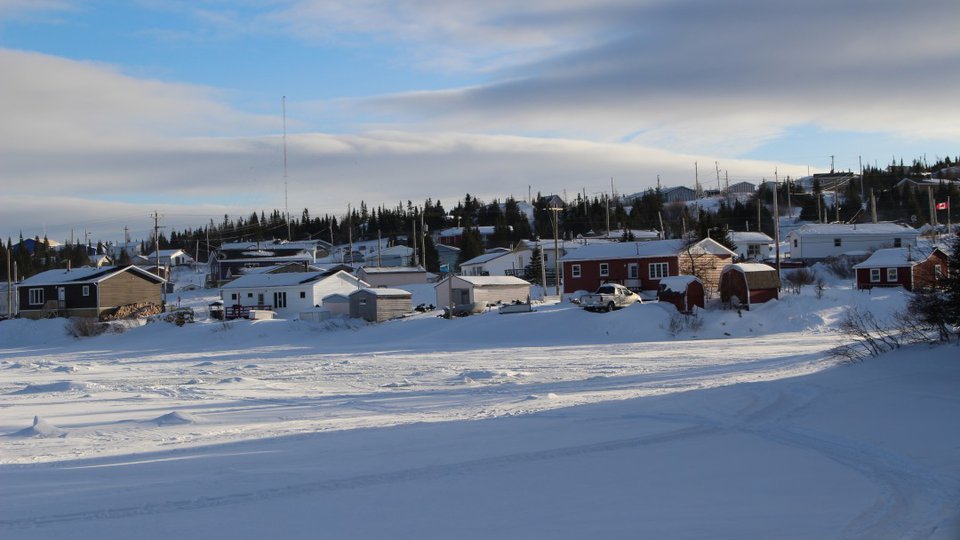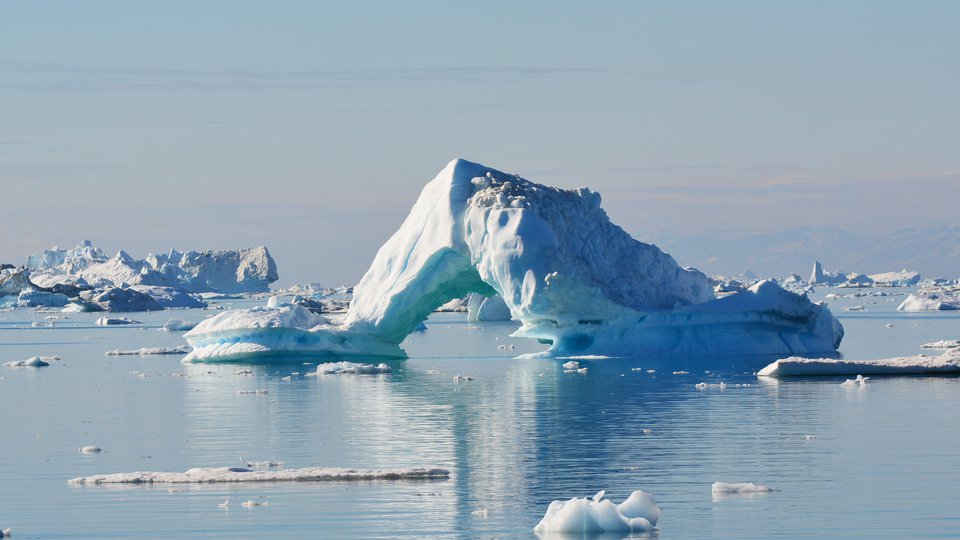
Can you spot the differences between a male and female beluga whale? The Beluga Bits program is asking volunteers to do just that - and more.
For the past eight years, this initiative between Polar Bears International, explore.org, and the Assiniboine Park Zoo has collected hundreds of thousands of underwater photos and countless hours of video footage documenting the world’s largest beluga population in Hudson Bay.
Through the help of online volunteers the data is revealing unique insights into beluga social behavior, individual whale identification, and even new marine species.
Arctic Focus interviewed Conservation Technician, Kasey Ryan, to learn more about the program and how citizen scientists can get involved.
Arctic Focus: What is the Beluga Bits Program?
Kasey Ryan: The Bega Bits programme is a project that started eight years ago where we essentially monitor the Western Hudson Bay ecosystem. And the primary way that we do that is by studying the beluga whales that live there. This is the biggest population of belugas in the world. There's over 50,000 whales.
Every summer we work with Polar Bears International and explore.org - we run a boat almost every day for about a month and a half. And we've got an underwater camera behind the boat and the belugas will follow the boat. They're super curious and interactive so we can study a lot about them under the surface that we can't see from above water.
Arctic Focus: What do you do with all of this video footage?
After we've got the month and a half of data, which is just an enormous amount of data, we take basically a frame per second from the video. So we end up with hundreds of thousands of photos, and then we actually use machine learning to dwindle that down. We get rid of frames that there are no belugas in the image. And then we take those images and put them into zoouniverse.org. And that's where we ask our community scientists to help us classify, look at sex and age and unique individuals. And then from that we can build this huge relational database, which is basically a way for researchers to come to us with a question, how has beluga body condition changed over time? And we can look at all the images where we can perfectly see the top side or underside of the whale, and they can use that data.
Arctic Focus: So what are some of the things that you're finding?
Kasey Ryan: So many things. We're finding more than we thought that we would find. We're getting unique insights into their sociality. We're starting to identify unique individuals over several years, so that's really exciting. We're looking at kind of unexpected things, like if they're pectoral fins are curved, does that mean that they're a male or they're just an older whale, things like that.
We did find the first recorded evidence of the northern comb jelly in Southern Hudson Bay. That species hadn't been recorded that far south before, and so that was kind of another unexpected result from this project. So we actually opened it up beyond belugas to look at jellies and jellyfish species in the area.

Photo: Kasey Ryan, Assiniboine Park Zoo
Arctic Focus: How can people reading this get involved?
Kasey Ryan: Absolutely. Yes. Every summer, from about mid-July through the end of August, you can actually join us virtually in Churchill. You can go on explore.org, you can watch, there's an above water camera and a below water camera so you can watch the belugas live with us. So you can collect snapshots of any cool things that you see. You can actually look at the snapshots from this year and see some of the amazing things that people saw. And then after that, throughout the rest of the year, you can go on zoouniverse.org and that's where you can help us classify, you're looking at things like, can you tell the sex of the whale? We'll give you all the instructions about how you can tell the difference, the age of the whale, and again, if there's any identifying characteristics that we could tell individuals apart.
Arctic Focus: Do we know why so many belugas come to this area every year?
Kasey Ryan: It's a great question. We think belugas congregate in this area. We know that belugas like shallow water in the summer. We think it's for a few reasons. They're giving birth to their calves in the summer. The shallow water is kind of a safe refuge from predators, like killer whales. We also think it might be because the water's warmer, that's good for a new calf that doesn't really have those big blubber stores yet. And then beluga has also shed their skin every summer. A lot of the times we see behaviour where they're going on the sea floor and kind of rubbing against rocks. So it's kind of helping the skin come off in the summer.

Photo: Kasey Ryan, Assiniboine Park Zoo
Arctic Focus: What makes this project unique when compared to other monitoring projects?
Kasey Ryan: I think this project is unique because this population of whales is so curious about people and boats. I've worked in a few other populations and belugas tend to be kind of avoidant of boats. In this population, for whatever reason, they're just really curious. They love boats.
We're able to get footage that I think a lot of other populations can't. This underwater footage where they're choosing to engage with us, we're not chasing them, we're just driving the boat along and they're following. I think we're getting really unique data in that way.
And then also the community science aspect of it. We've got almost 30,000 volunteers on zoouniverse.org. They've made over seven and a half million classifications. So we've got this huge data set that we're hoping other populations, other researchers can use.
Arctic Focus: Why do you think this data is so important?
Kasey Ryan: This is so important because as the Arctic and subArctic starts to warm, it's increasingly important to have a good dataset. The tourism ecosystem in Churchill is extremely important. It would be devastating if the whales stopped coming into this area if there were things like increased shipping. And so having this baseline is really important. Belugas are also indicators for the overall ecosystem. So if their health isn't great, it usually is an indication that the ecosystem itself isn't doing great as well.
Arctic Focus: What makes beluga whales so special?
Kasey Ryan: Belugas are highly social and vocal animals, earning them the nickname “canaries of the sea” because they use a wide range of acoustic signals communicate with each other and to navigate their environment. We know from studying other populations that both related and unrelated individuals can form stable associations over time, with some whales being photographed in the same group over the course of several years. They also have distinct personalities! In an aquarium, I once saw one of the more playful belugas keep a fish from the feeding session in its mouth, then swim over to the fence connecting their enclosure to the sea lions. The beluga would push the fish through the fence, and as soon as the sea lions went for it, the whale would suction the water to pull the fish back through the fence – repeating the game over and over again!
Arctic Focus: Is there anyone you’d like to thank for making the project possible?
Kasey Ryan: A huge thank you to our sponsors, including RBC’s Tech for Nature Fund and Calm Air. This work would also not be possible without our collaborators, including Polar Bears International, Explore.org, Zooniverse, Sea North Tours, the Churchill Northern Studies Centre, and Assiniboine Park Conservancy.





